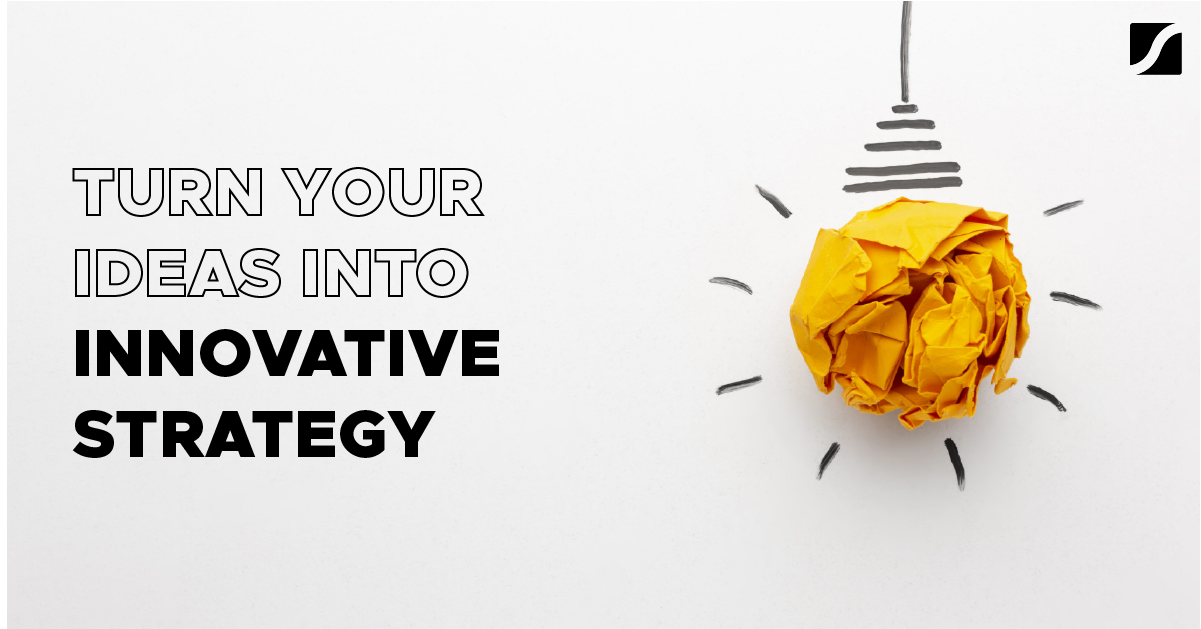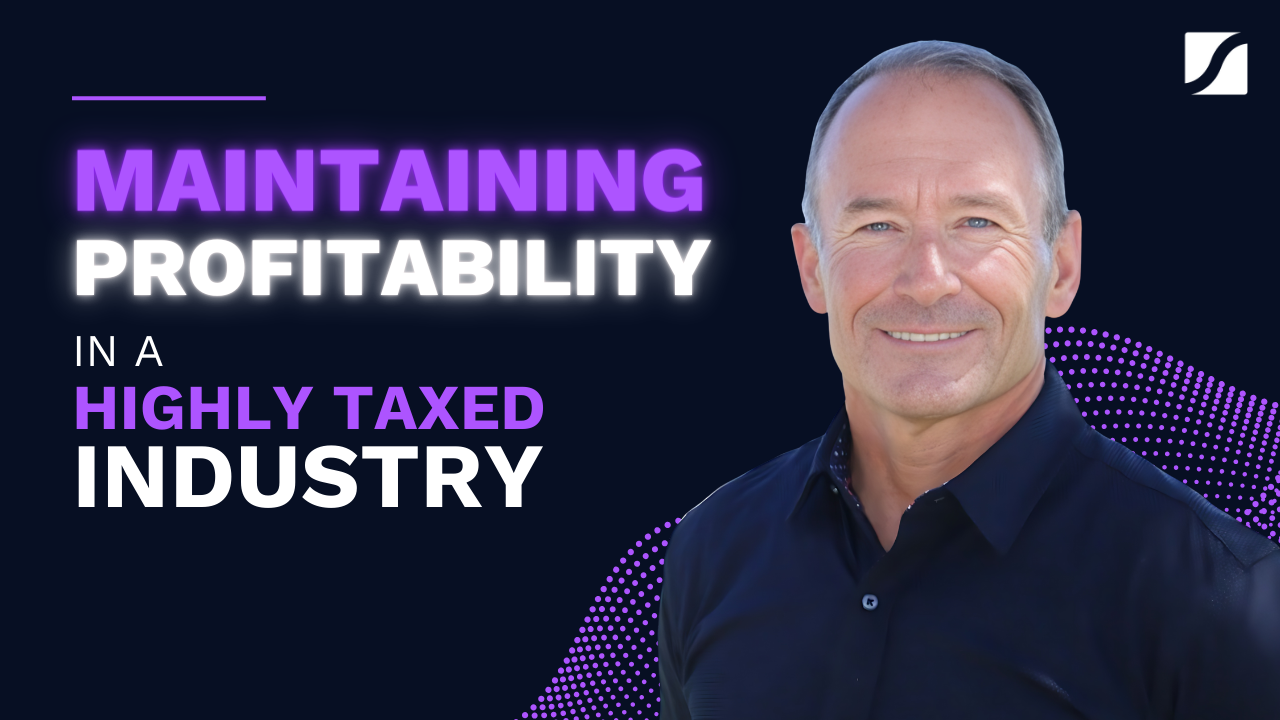How To Turn Your Team's IDEAS Into Innovative Strategy With A Simple Framework


How do you think about strategy?
It’s an important question, because it impacts the effectiveness of your own company’s strategy.
Strategic thinking is an invaluable skill for an executive, because to win over customers or clients, you need to be able to outthink your competitors.
There are five steps you can take to begin elevating your company’s strategy into one that enables you to dominate your industry. The 5-step framework is all about just following your ideas. That’s why I call it the I.D.E.A.S. framework. It goes like this:
(I)magine
(D)issect
(E)xpand
(A)ssess
(S)ell
In this article, I’ll go through all five steps with you and show you how you can use them to outthink your competitors and spur innovative growth.
Adopt The Mindset Of A Top Strategist
I first want to start by helping you get into the mindset of a strategist.
How do top strategists see the game-changing options that others don’t see?
We can learn a lot about that by studying great chess players. For example, Alexandra Kostenuik is a reigning Women’s World Chess Champion.
As a marketing stunt, she’ll challenge a whole town to play chess. She’ll line up all her opponents up against a table and go from board to board to play her next move. And then she’ll go back and repeat this process until she’s won all the games.
You could be sitting there for 20 minutes asking yourself what her next move will be. And she’ll get to your game, glance at it, and just make her move. You might think that, logically, she can’t play this fast with so many games at the same time. But Alexandra doesn’t apply logic.
It has very little to do with innate intelligence or IQ. It’s that she overcomes the mathematical limitations of the human brain with a few simple mind tricks.
She thinks, “What is the pattern here? When have I played a game like this before? I remember. What comes next in the game is this move.”
Essentially, she cheats. She uses a form of sequential chunking. It’s a sequence that she’s seen before, much like a narrative or a story.
She recognizes so many more games than amateurs, experts, and even master chess players.
Humans can only remember seven plus or minus two things at once. When we are solving simple problems, we can think through those options. But when we make many decisions throughout the day, we face many more options than just 7.
It’s called the Baddeley Model of Short-Term Working Memory.
We learn narratives from a very young age. They start getting programmed into us when we are three years old.
The narratives that I have been using for the past several years are called the 36 Stratagems.
In different eras, different strategies dominate. And they evolve over time. The competitors that are winning today are playing with another set of plans.
If you want to compete in the new domain, the new form of competition, the new paradigm, you need to know and remember these top strategies for winning the growth game .
For now, I’ll leave the link here for the 36 Stratagems Cheat Sheet, which will be most helpful to you at the Expand step of the framework.
Now, let’s get started.
(I) Imagine (or Idealize)
Most strategic planning processes look something like this: You start with where you are, how you got here, analyze your strengths and weaknesses, and then look at setting stretch goals.
You may be at a 15% profit margin and want to get to 20%. Or you may have an NPS score of 30, and you want to make that 35.
It is a solid method, but it’s limited. Looking at strategy in this way encourages incremental thinking. Effectively, to go from a score of 30 to 35, you would only need to make some small changes.
The I.D.E.A.S. framework is all about helping you uncover the strategic innovation in your company, not adhering to your limitations. So with this first step in the framework, what you want to do is the opposite of that.
The thinking in this first step is more about imagining what your ideal future scenario looks like and then identifying the requisite changes you would need to make that future possible.
Start with today and then ahead think into the future.
You’ll want to have a conversation about these three key things:
- What is the mess? (the undesirable but realistic future)
- What are the long-term trends?
- What is our ideal outcome or vision for the future?
These steps will help you define your near-term objective.
(D) Dissect
This step aims to break down your problem and determine which key leverage points you have in your arsenal.
If you can identify those leverage points, you have a much better chance of formulating a strategy that you can implement effectively
The main thing is not to get drawn to the seemingly obvious leverage points. For example, if you sit down with your marketing people, they’ll naturally look at your leverage points in marketing. Your operations team will look at operations points, etc.
Be careful of focusing on the obvious points that come up. Instead, take this opportunity to step back and look at the totality of the different leverage points.
It’s not just about people, or marketing, processes. It’s about all of those things. I call them the 8 Ps. They include the 4 Ps of marketing, with four additional ones that I’ve thrown in.
These are the 8 Ps you can use to identify your leverage points:
- Price
- Product
- Promotion
- Place
- Positioning
- Process
- Physical Experience
- People
Use these to diagnose where you are today. You’ll want to look at where you’re weak, as good as the competition, and where you are already winning.
Which of these Ps should your strategy focus on today to achieve your near-term goal?
(E) Expand (or Explore)
Your objective at this step in the framework is to generate lots of strategic options.
Usually, in strategic planning, your objective is to develop 2, 3, or 4 strategic options. But that’s not what we want to do here.
We want to come up with 20, or 30, or even 100 potential strategies.
You want a large volume of strategies. That way there’s a greater chance that you’ll find your game-changing idea that no one else has thought of (what I like to call the Fourth Option) in that list.
At this point, you may be asking the question that’s important for this step: How do you come up with so many options?
And this goes back to the question and story that I shared at the beginning of this article. How do great strategists see the moves that others won’t see? Just like Alexandra Kostenuik, top strategists can recognize the patterns and narratives they’ve seen before.
In this phase of the process, you want to apply those strategic narratives (that we mentioned above) to your strategizing to produce more strategic options.
You want to apply each of these narratives to your business challenge and use them to generate lots and lots of ideas that we can assess and sort into in the next steps.
And you’ll want to get your team into the mindset of brainstorming from these familiar strategic narratives.
For example, say you want your team to think about how to disrupt your competitors under the guise of a peace offering. It can be as easy as saying, “Hey, what’s our Trojan Horse?”
(A) Assess and Analyze
Now that you’ve generated all these strategic ideas, you’re going to sort through them and choose which ones you want to pursue.
At this point, you’ll arrive at a dilemma:
Innovative ideas always seem impossible.
Once you have your list, you’ll look at them and say, “Which idea do we want to focus on?”
But that’s not how you’re thinking about it. What you really mean is, “Which ideas do I think will work based on the patterns I have seen?”
That’s the limiting thought that threatens to derail your momentum in this framework. The reality is that game-changing strategic moves always seem impossible to achieve. So what you want to do is recognize that in this process. That way, you can avoid killing off disruptive ideas too early.
Luckily there’s a simple way around this.
As Albert Einstein said, “It’s not that I'm so smart. It’s that I stay with problems longer.”
So that's what you're going to do; an easy exercise that I start with my clients is to have each idea, plot it in a 2x2 matrix, and ask two questions about each one.
- “Is this easy or difficult to implement?”
- “If I had a magic wand and I could execute this idea, what would be the impact of having executed this idea?”
Stay with your ideas longer and work out with your team which ones are the most aligned to your strategy and what it will take to make them real.
(S) Sell
Now that you have a strategy, people need to understand it. Everyone you will collaborate with and need to get buy-in from has to understand and believe in the plan.
It is not always easy to convince people of your strategy, even if it is strong.
Just because you have a great idea doesn’t mean that the whole world will automatically embrace the brilliance of your vision.
Your job of selling is part of the process. Strategy is not just what you say you’re going to do. Strategy is also where you take action. And selling is a fundamental part of this. You've got to have input and alignment among your key stakeholders, which is anyone you need cooperation from to implement your strategy.
Conclusion
So that’s the framework. It relies on you changing your mindset about strategy and committing to work through these ideas thoroughly with your team.
This is the key to discovering your out-of-the-box Fourth Option, so you can build an innovative strategy that enables you to outperform your market.




